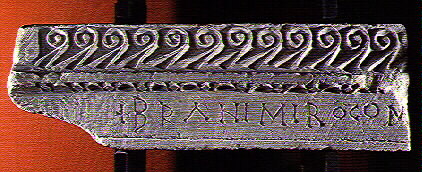|
Borongaj
Borongaj is a neighborhood the Peščenica – Žitnjak district of Zagreb, Croatia. It is situated south of the main railway along Branimir Branimir () is a Slavic male given name. It is a combination of the ( Slavic) verb ''braniti'' ("to defend") and the noun ''mir'' ("the world" or "peace" in Old Slavic), and hence means "the one who defends the world/peace". It is especially commo ... Avenue and east of Donje Svetice Road. It is the location of the former Borongaj Airfield. For administrative purposes, Borongaj is part of the "Bruno Bušić" local committee. It covers an area of , and it is populated by 4,571 inhabitants (2011). References {{coord, 45, 48, 46, N, 16, 1, 36, E, type:city(5507)_region:HR-21, display=title Neighbourhoods of Zagreb ... [...More Info...] [...Related Items...] OR: [Wikipedia] [Google] [Baidu] |
Peščenica – Žitnjak
Peščenica – Žitnjak () is a city district in the southeastern part of Zagreb, Croatia. It consists of two parts: Peščenica, a set of neighborhoods; and Žitnjak, a large industrial zone on the city outskirts, and has a total population of 56,487 (2011 census). The smaller neighbourhoods that form the core of Peščenica include: * Stara Peščenica * Donje Svetice * Volovčica * Ferenščica These neighborhoods are delineated by major city arterials, such as the Slavonska Avenue and Vukovarska Avenue. To the northeast, towards Donja Dubrava, there are: * Borongaj (local administration "Bruno Bušić") * Borongaj Lugovi * Vukomerec To the southwest, towards Trnje, there are: * Borovje * Folnegovićevo naselje * local administration "Oton Župančić" The places in the outer rim, around and beyond Žitnjak, include: * Kozari Bok * Kozari putevi * Savica–Šanci * Petruševec * Resnik * Ivanja Reka * Žitnjak (Struge) History Stara Peščenica and Volovčica were first p ... [...More Info...] [...Related Items...] OR: [Wikipedia] [Google] [Baidu] |
Zagreb
Zagreb ( , , , ) is the capital (political), capital and List of cities and towns in Croatia#List of cities and towns, largest city of Croatia. It is in the Northern Croatia, northwest of the country, along the Sava river, at the southern slopes of the Medvednica mountain. Zagreb stands near the international border between Croatia and Slovenia at an elevation of approximately above mean sea level, above sea level. At the 2021 census, the city had a population of 767,131. The population of the Zagreb urban agglomeration is 1,071,150, approximately a quarter of the total population of Croatia. Zagreb is a city with a rich history dating from Roman Empire, Roman times. The oldest settlement in the vicinity of the city was the Roman Andautonia, in today's Ščitarjevo. The historical record of the name "Zagreb" dates from 1134, in reference to the foundation of the settlement at Kaptol, Zagreb, Kaptol in 1094. Zagreb became a free royal city in 1242. In 1851 Janko Kamauf became Z ... [...More Info...] [...Related Items...] OR: [Wikipedia] [Google] [Baidu] |
Croatia
, image_flag = Flag of Croatia.svg , image_coat = Coat of arms of Croatia.svg , anthem = "Lijepa naša domovino"("Our Beautiful Homeland") , image_map = , map_caption = , capital = Zagreb , coordinates = , largest_city = capital , official_languages = Croatian , languages_type = Writing system , languages = Latin , ethnic_groups = , ethnic_groups_year = 2021 , religion = , religion_year = 2021 , demonym = , government_type = Unitary parliamentary republic , leader_title1 = President , leader_name1 = Zoran Milanović , leader_title2 = Prime Minister , leader_name2 = Andrej Plenković , leader_title3 = Speaker of Parliament , leader_name3 = Gordan Jandroković , legislature = Sabor , sovereignty_type ... [...More Info...] [...Related Items...] OR: [Wikipedia] [Google] [Baidu] |
Branimir Of Croatia
Branimir ( la, Branimiro) was a ruler of Croatia who reigned as duke ( hr, knez) from 879 to 892. His country received papal recognition as a state from Pope John VIII on 7 June 879. During his reign, Croatia retained its sovereignty from both Frankish and Byzantine rule and became ''de jure'' independent.''Hrvatski leksikon'' (1996–1997) Stjepan Antoljak, Pregled hrvatske povijesti, Split 1993., str. 43. Reign Rise to power In 879, Branimir had Duke Zdeslav, a supporter of the Byzantine Empire, killed near Knin in a rebellion that he led. Approval from the Holy See was brought about by Branimir's own actions to bring the Croats further away from the influence of Byzantium and closer to Rome. Duke Branimir wrote to Pope John VIII affirming this split from Byzantine and commitment to the Roman Papacy. During the solemn divine service in St. Peter's church in Rome in 879, Pope John VIII gave his blessing to the duke and the whole Croatian people, about which he informed Bran ... [...More Info...] [...Related Items...] OR: [Wikipedia] [Google] [Baidu] |

